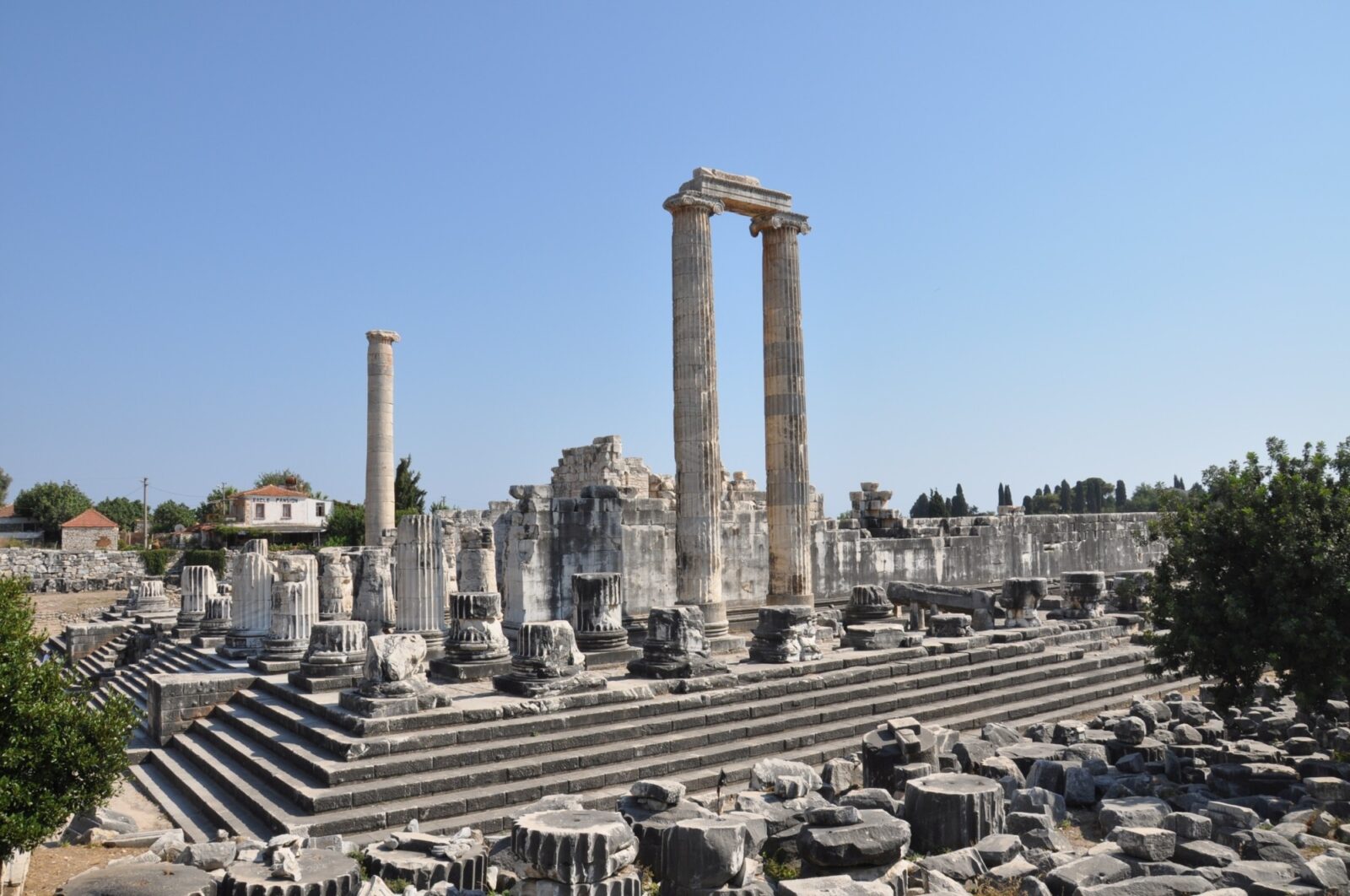The Temple of Apollo, or the Apollon Temple, refers to various ancient temples dedicated to the Greek god Apollo. Apollo was one of the most important gods in Greek mythology, associated with music, prophecy, healing, and the sun.
There were several notable temples of Apollo throughout the ancient Greek world, but two of the most famous ones are the Temple of Apollo in Delphi and the Temple of Apollo in Didyma.
The Temple of Apollo in Delphi was located in the sanctuary of Delphi, situated on the slopes of Mount Parnassus in central Greece. Delphi was regarded as the center of the world in ancient Greek belief and served as a major religious and cultural site. The Temple of Apollo at Delphi housed the Oracle of Delphi, where the Pythia, a priestess, delivered prophecies believed to be inspired by Apollo.
The Temple of Apollo in Didyma, also known as the Didymaion, was located in ancient Didyma, near Miletus in present-day Turkey. It was one of the largest temples in the ancient Greek world and was renowned for its grandeur and architectural sophistication. The temple complex at Didyma included the Temple of Apollo, a sacred spring, and various other buildings. The construction of the temple began in the 6th century BC but was never fully completed.
Both temples were significant religious and cultural centers, attracting pilgrims and visitors from far and wide. They were characterized by their impressive architectural style, incorporating Doric and Ionic elements, and were decorated with elaborate sculptures and reliefs.
Although the Temple of Apollo in Delphi is now mostly in ruins, the remains still evoke a sense of the site’s former glory. The Temple of Apollo in Didyma, while also mostly in ruins, still retains some of its colossal columns, providing a glimpse into its past magnificence.
The temples of Apollo played a vital role in ancient Greek religion and were places of worship, pilgrimage, and cultural activities. They are important archaeological sites today, offering insights into ancient Greek religious practices, architecture, and artistic traditions. Visitors can explore the ruins, appreciate the remnants of these grand temples, and reflect on their historical and cultural significance.
The façade of the library is particularly impressive, with two levels adorned with Corinthian columns and statues representing allegorical figures. The niches of the façade once contained statues of the four cardinal virtues: wisdom, virtue, knowledge, and prudence.
Unfortunately, the Library of Celsus was partially destroyed by an earthquake in the 3rd century and remained in ruins for centuries. However, in the 1970s, a restoration campaign reconstructed the main façade of the library, allowing visitors to admire its past splendor.
Today, the Library of Celsus is one of the most popular attractions in Ephesus. Visitors can stroll among the remnants of this majestic library, appreciating the Roman architecture and imagining the significance of this structure in the cultural and intellectual life of the time.
In summary, the Library of Celsus is an iconic structure in the ancient city of Ephesus. With its beautifully restored façade, it bears witness to the cultural and intellectual richness of the Roman era. It is a fascinating testament to the importance placed on education and the preservation of knowledge in antiquity.

